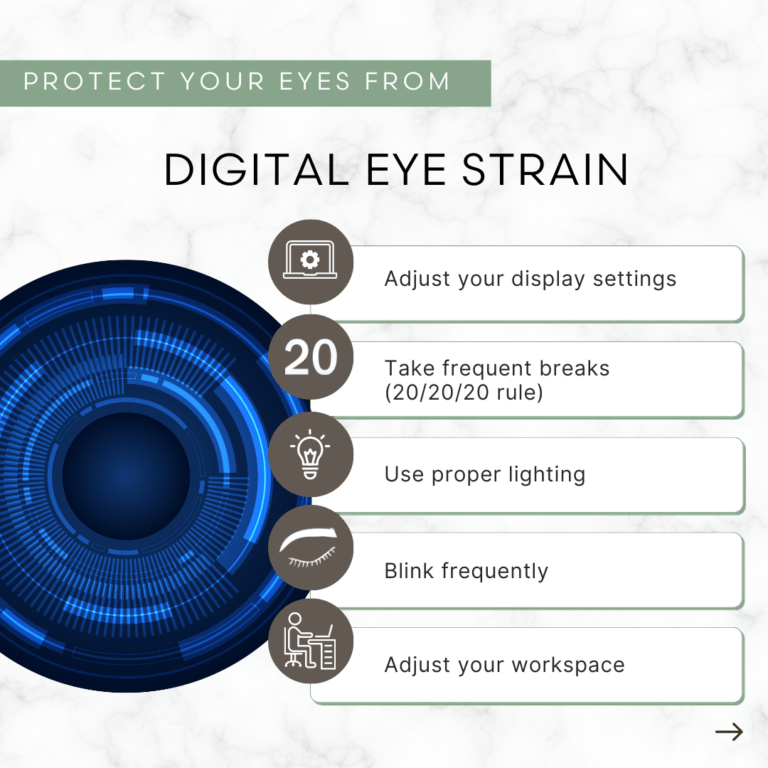In today’s digital age, we rely on electronic devices more than ever before. From smartphones to laptops, we spend a significant amount of time staring at screens. However, prolonged use of electronic devices can cause digital eye strain, which can lead to a host of uncomfortable symptoms like headaches, dry eyes, and blurred vision. Fortunately, there are several steps you can take to protect your eyes from digital eye strain. In this blog, we’ll explore some practical tips to help you minimize the effects of digital eye strain.
- Adjust Your Display Settings
The brightness and contrast of your computer or phone screen can affect your eye health. By adjusting these settings, you can reduce the amount of blue light that your screen emits. Blue light can cause eye fatigue, so it’s a good idea to minimize your exposure to it. You can also adjust the size and color of the text on your screen to make it easier to read.
- Take Frequent Breaks
One of the most effective ways to prevent digital eye strain is to take frequent breaks. The American Optometric Association recommends the 20-20-20 rule. That means taking a break every 20 minutes to look at something 20 feet away for 20 seconds. This will help relax your eye muscles and reduce eye fatigue.
- Use Proper Lighting
The lighting in your room can also affect your eye health. Make sure that the room is well lit, but not too bright. If you’re working in a dark room, it can cause eye strain. Try to avoid working in the dark and use a desk lamp to illuminate your workspace. Also, avoid working in front of a window or other source of bright light that can cause glare on your screen.
- Blink Frequently
When you stare at a screen for a long time, you tend to blink less frequently. This can cause dry eyes and eye strain. To avoid this, make a conscious effort to blink more often when using electronic devices. You can also use eye drops to keep your eyes moisturized.
- Adjust Your Workspace
The position of your computer screen can also affect your eye health. Make sure that your screen is at the right height and distance from your eyes. The top of your screen should be at or slightly below eye level, and the distance between your eyes and the screen should be about an arm’s length away.
In conclusion, digital eye strain is a common problem in today’s world, but it’s preventable. By following these simple tips, you can protect your eyes from the harmful effects of electronic devices. Remember to take breaks, adjust your display settings, use proper lighting, blink frequently, and adjust your workspace. With these steps, you can maintain healthy eyes and enjoy your electronic devices without discomfort.




